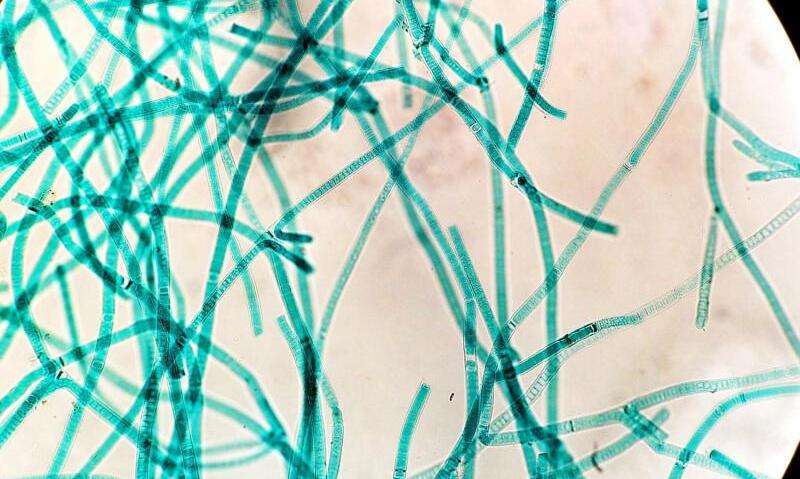This article has been reviewed according to Science X's editorial process and policies. Editors have highlighted the following attributes while ensuring the content's credibility:
fact-checked
peer-reviewed publication
trusted source
proofread
Scientists unlock key to breeding 'carbon gobbling' plants with a major appetite

The discovery of how a critical enzyme "hidden in nature's blueprint" works sheds new light on how cells control key processes in carbon fixation, a process fundamental for life on Earth.
The discovery, made by scientists from The Australian National University (ANU) and the University of Newcastle (UoN), could help engineer climate-resilient crops capable of sucking carbon dioxide from the atmosphere more efficiently, helping to produce more food in the process.
The research, published in Science Advances, demonstrates a previously unknown function of an enzyme called carboxysomal carbonic anhydrase (CsoSCA), which is found in cyanobacteria—also called blue-green algae—to maximize the microorganisms' ability to extract carbon dioxide from the atmosphere.
Cyanobacteria are commonly known for their toxic blooms in lakes and rivers. But these little blue-green bugs are widespread, also living in the world's oceans.
Although they can pose an environmental hazard, the researchers describe them as "tiny carbon superheroes." Through the process of photosynthesis, they play an important role in capturing about 12% of the world's carbon dioxide each year.
First author and Ph.D. researcher Sacha Pulsford, from ANU, describes how remarkably efficient these microorganisms are at capturing carbon.
"Unlike plants, cyanobacteria have a system called a carbon dioxide concentrating mechanism (CCM), which allows them to fix carbon from the atmosphere and turn it into sugars at a significantly faster rate than standard plants and crop species," Ms. Pulsford said.
At the heart of the CCM are large protein compartments called carboxysomes. These structures are responsible for sequestering carbon dioxide, housing CsoSCA and another enzyme called Rubisco. The enzymes CsoSCA and Rubisco work in unison, demonstrating the highly efficient nature of the CCM. The CsoSCA works to create a high local concentration of carbon dioxide inside the carboxysome that Rubisco can then gobble up and turn into sugars for the cell to eat.
Lead author Dr. Ben Long from UoN said, "Until now, scientists were unsure how the CsoSCA enzyme is controlled. Our study focused on unraveling this mystery, particularly in a major group of cyanobacteria found across the globe. What we found was completely unexpected.
"The CsoSCA enzyme dances to the tune of another molecule called RuBP, which activates it like a switch. Think of photosynthesis like making a sandwich. Carbon dioxide from the air is the filling, but a photosynthetic cell needs to provide the bread. That's RuBP. Just like you need bread to make a sandwich, the rate of turning carbon dioxide into sugar depends on how fast RuBP is supplied.
"How fast the CsoSCA enzyme supplies carbon dioxide to Rubisco is dependent on how much RuBP is present. When there's enough, the enzyme is switched on. But if the cell runs out of RuBP, the enzyme is switched off, making the system highly tuned and efficient. Surprisingly, the CsoSCA enzyme has been embedded in nature's blueprint all along, waiting to be discovered."
The scientists say engineering crops that are more efficient at capturing and utilizing carbon dioxide would provide a huge boost for the agricultural industry by vastly improving crop yield while reducing the demand for nitrogen fertilizer and irrigation systems. It would also ensure that the world's food systems are more resilient against climate change.
Ms. Pulsford said, "Understanding how the CCM works not only enriches our knowledge of natural processes fundamental to Earth's biogeochemistry but may also guide us in creating sustainable solutions to some of the biggest environmental challenges the world is facing."
More information: Sacha Pulsford et al, Cyanobacterial α-carboxysome carbonic anhydrase is allosterically regulated by the Rubisco substrate RuBP, Science Advances (2024). DOI: 10.1126/sciadv.adk7283. www.science.org/doi/10.1126/sciadv.adk7283
Journal information: Science Advances
Provided by Australian National University




















